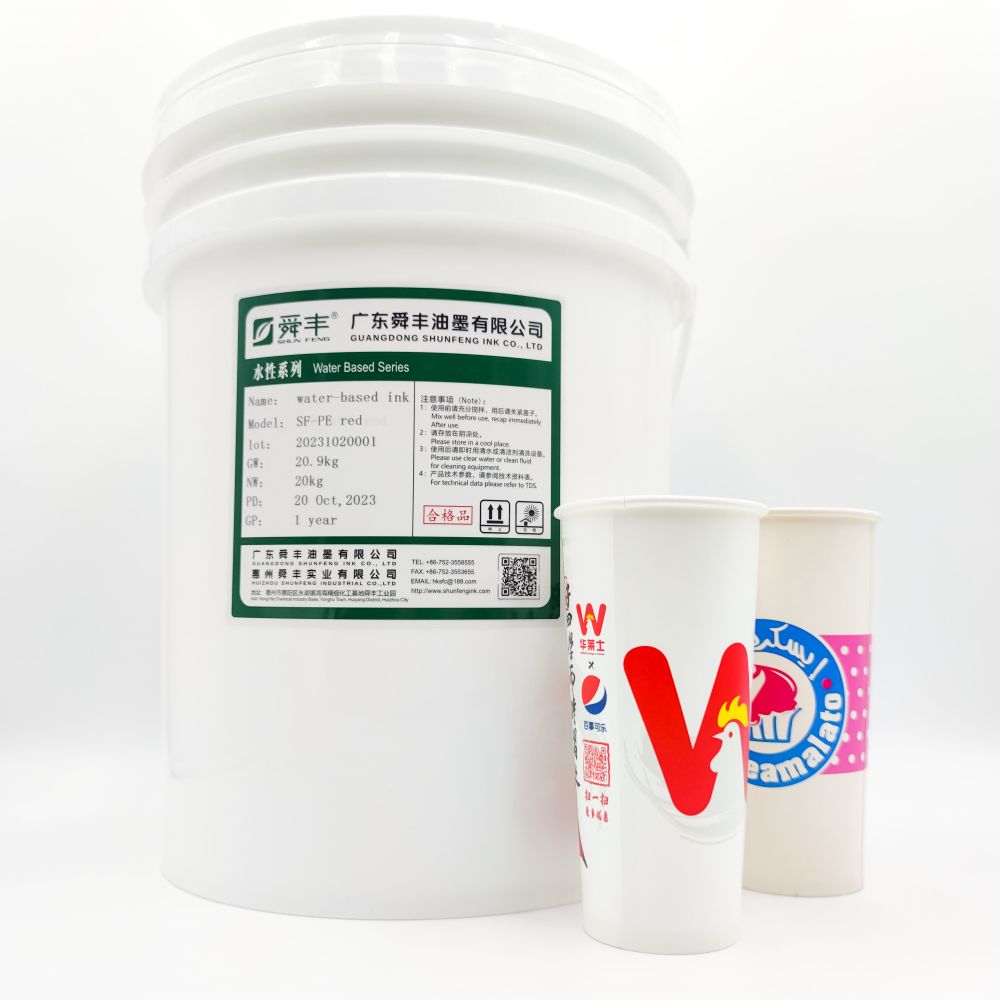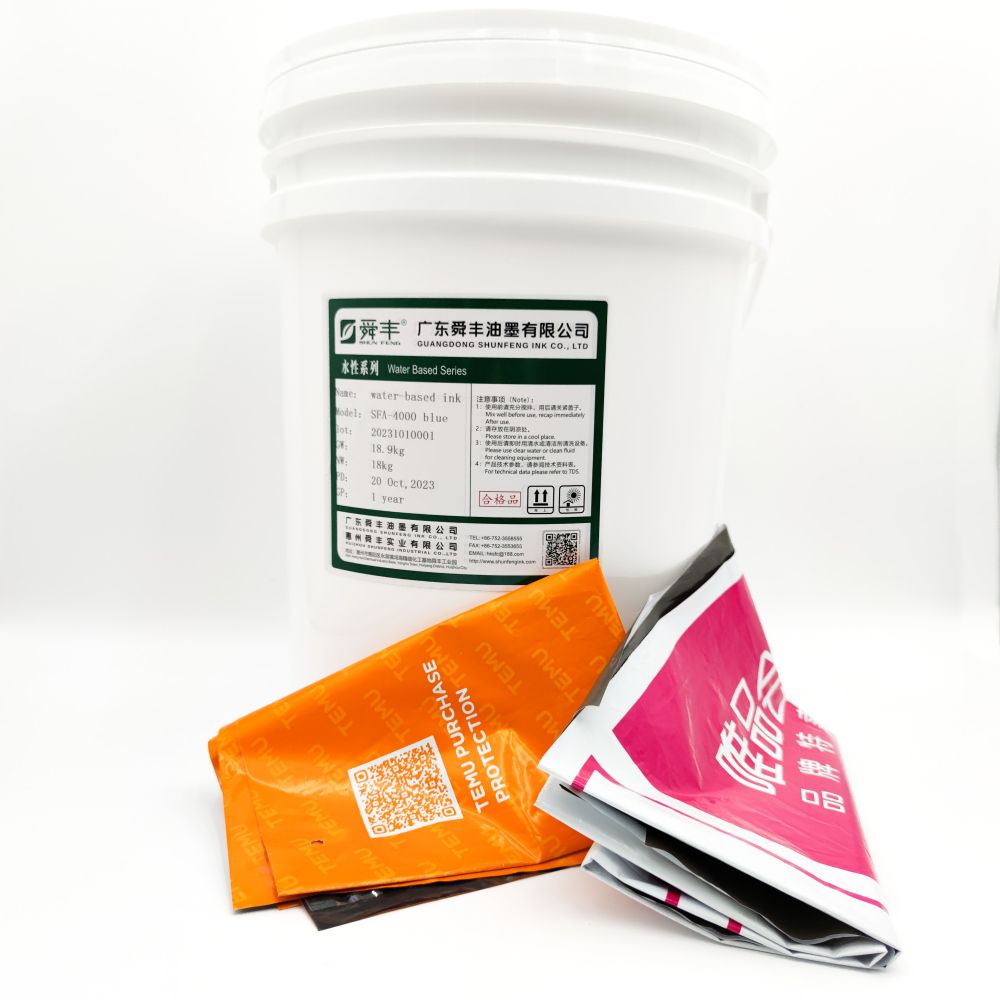The Current Situation and Development Trend of China's Water-based Ink Industry
Overview of Water-based Ink
Water-based ink, also known as water ink or aqueous ink, is a type of printing material that uses water as the main solvent. Its formula includes water-soluble resins, non-toxic organic pigments, performance-modifying additives, and solvents, all carefully ground and blended. The main advantage of water-based ink lies in its environmental friendliness: it eliminates the use of volatile toxic organic solvents, ensuring no health threat to operators during the printing process and no atmospheric pollution. Additionally, due to its non-flammable nature, it eliminates potential fire and explosion risks in printing workplaces, greatly enhancing production safety. Products printed with water-based ink contain no residual toxic substances, achieving full green environmental protection from source to finished product. Water-based ink is particularly suitable for packaging printing with high hygiene standards, such as for tobacco, alcohol, food, beverages, pharmaceuticals, and children's toys. It offers high color stability, excellent brightness, strong coloring power without damaging printing plates, good post-printing adhesion, adjustable drying speed to meet different needs, and excellent water resistance, making it suitable for both four-color process printing and spot color printing. Due to these advantages, water-based ink is widely used abroad. Although China's development and application of water-based ink started later, it has rapidly advanced. With increasing market demand, the quality of domestic water-based ink continues to improve, overcoming early technical challenges such as long drying times, insufficient gloss, poor water resistance, and subpar printing effects. Currently, domestic water-based ink is gradually expanding its market share due to its improving product quality and competitiveness, gaining widespread user favor and securing a stable market position.
Classification of Water-based Ink
Water-based ink can be mainly divided into three types: water-soluble ink, alkaline-soluble ink, and dispersible ink. Water-soluble ink uses water-soluble resins as a carrier, dissolving the ink in water; alkaline-soluble ink uses alkaline-soluble resins, requiring alkaline substances to dissolve the ink; dispersible ink forms a stable suspension by dispersing pigment particles in water.
Development History of Water-based Ink
The development of water-based ink can be traced back to the mid-20th century when rising environmental awareness and concerns about the environmental impact of solvent-based inks led to the research and application of water-soluble ink. Entering the 21st century, with increasingly strict global environmental regulations, the water-based ink industry developed rapidly. In the early 2000s, new types of water-based inks such as alkaline-soluble ink and dispersible ink began to emerge, gradually replacing some of the market share of traditional solvent-based inks. In recent years, with the deepening concept of green printing and technological progress, the performance of water-based ink has continuously improved, its application fields have expanded, and it has become an important development direction in the printing industry.

Industrial Chain of Water-based Ink
The upstream industries of water-based ink mainly include the production and supply of raw materials such as resins, pigments, and additives. In downstream applications, water-based ink is widely used in packaging printing, book printing, commercial advertisement printing, and textile printing. Due to its environmental friendliness and good printing performance, it gradually replaces some traditional solvent-based inks, becoming an important choice in the printing industry.
Current Situation of China's Water-based Ink Market
In 2022, the overall production of China's coating industry, affected by the weak real estate market and recurring pandemic impacts on consumer market demand, recorded a total volume of 35.72 million tons, down 6% year-on-year. However, in 2021, the printing industry showed a comprehensive recovery and growth trend. That year, China's printing and reproduction industry—including publication printing, special printing, packaging and decoration printing, and other printing businesses, along with related printing materials supply and reproduction services—achieved a total operating income of 1.330138 trillion RMB, a 10.93% increase from the previous year, though total profit fell to 54.517 billion RMB, a 1.77% decrease. Overall, China's downstream application fields for water-based ink have developed to be mature and comprehensive. As China's economy gradually recovers and enters a stable growth track post-pandemic, it is expected that the demand for eco-friendly water-based ink will further increase and expand. In 2008, China's annual production of water-based ink was only 79,700 tons; by 2013, this figure had significantly surpassed 200,000 tons; and by 2022, the total production of China's water-based ink industry further increased to 396,900 tons, with water-based gravure printing ink accounting for about 7.8%, occupying an important market share. This demonstrates the rapid growth and development of China's water-based ink industry over the past decade. The internal competition in China's water-based ink industry is fierce, with numerous companies, including powerful leading enterprises such as Bauhinia Ink, DIC Investment, Hanghua Ink, Guangdong Tianlong Technology, Zhuhai Letong Chemical, Guangdong Ink Group, and Guangdong JiaJing Technology Co., Ltd. These companies not only have advanced technology and R&D capabilities but also leverage their extensive market networks and channel advantages to occupy high market shares and significantly influence the market, always leading industry development. Some international well-known water-based ink manufacturers also actively compete in the Chinese market through deep cooperation with local companies or by setting up production bases in China. Notably, among the leading companies mentioned, some have successfully listed, such as Letong Co., Hanghua Co., and Tianlong Group. In 2022, Guangdong Tianlong Group performed well in terms of operating income, significantly exceeding the listed companies Letong Co. and Hanghua Co.
Policies in the Water-based Ink Industry
The development of China's water-based ink industry is significantly guided and supported by national policies and regulations. In recent years, as the country places greater emphasis on environmental protection and sustainable development strategies and strengthens the management of VOCs (volatile organic compounds) emissions, the government has introduced a series of policy measures aimed at promoting the development of the water-based ink industry. In terms of environmental policies, laws and regulations such as the "Law of the People's Republic of China on the Prevention and Control of Atmospheric Pollution" and the "Key Industry VOCs Reduction Action Plan" set strict requirements for VOCs emissions in the printing and packaging industry. This compels relevant companies to switch to environmentally friendly ink products with low or no VOCs emissions, such as water-based ink, thereby creating a broad market demand space for the industry.
Challenges in the Water-based Ink Industry
While the water-based ink industry has significant advantages in promoting environmental protection and sustainable development, it also faces several challenges. Technologically, although water-based ink has excellent environmental performance, its inherent chemical characteristics, such as relatively slow drying speed, poor adaptability to printing substrates, and inferior gloss and water resistance compared to solvent-based inks, still need improvement. This limits its application in some high-end printing fields. Additionally, during production, issues like stability control can arise, such as layering and sedimentation of the ink, which need to be addressed through formula improvements, process optimization, and enhanced stirring and storage management. In the market, water-based ink has relatively high costs, especially initial equipment investment and technology conversion costs, causing some small and medium-sized enterprises to be cautious about adopting water-based ink due to financial pressures. Moreover, the recognition and acceptance of water-based ink by consumers and enterprises need to be improved. When balancing economic benefits with environmental benefits, cost factors may be prioritized over environmental impact.
Prospects of the Water-based Ink Industry
The water-based ink industry has a promising future, with a positive development trend. As global environmental awareness continues to increase and governments impose stricter environmental protection regulations, particularly limiting VOCs emissions, the market demand for water-based ink as an eco-friendly alternative to traditional solvent-based inks is growing significantly. In fields such as packaging printing, label printing, and publication printing, water-based ink is favored for its non-toxic, odorless, low-pollution properties that meet food safety requirements. Technological progress is a key driver of the water-based ink industry's development, with research institutions and enterprises continuously increasing their investment in water-based ink technology R&D, aiming to address existing product deficiencies in weather resistance, drying speed, and adhesion to meet high-end printing market demands. In the future, with the application of new materials and technologies, the performance of water-based ink products will further improve, potentially replacing traditional ink products in more fields. Additionally, in the context of the global green economic transition, more companies are focusing on social responsibility and sustainable development, opting for environmentally friendly materials in production. The water-based ink industry thus faces unprecedented development opportunities, particularly in sectors like food packaging, children's toys, and daily chemical product packaging, where market demand will continue to expand. In summary, the market size of the water-based ink industry is expected to continue growing, driven by policy and technological innovation, achieving industrial structure optimization and upgrading, and steadily advancing towards higher quality and greener environmental protection. The deep integration of domestic and international markets, along with increasing consumer demand for green printed products, will also bring broader market space and development potential for the water-based ink industry.











